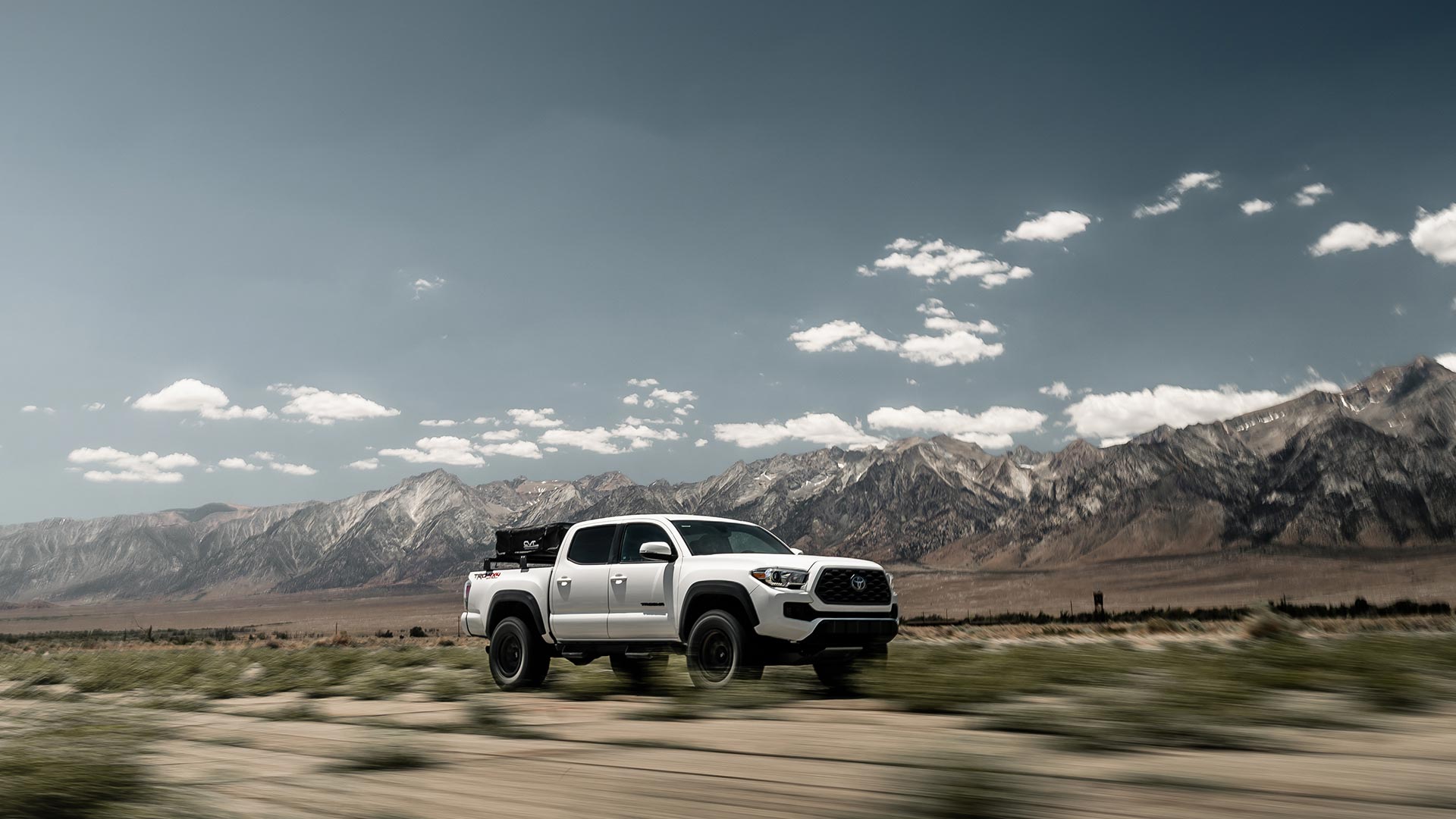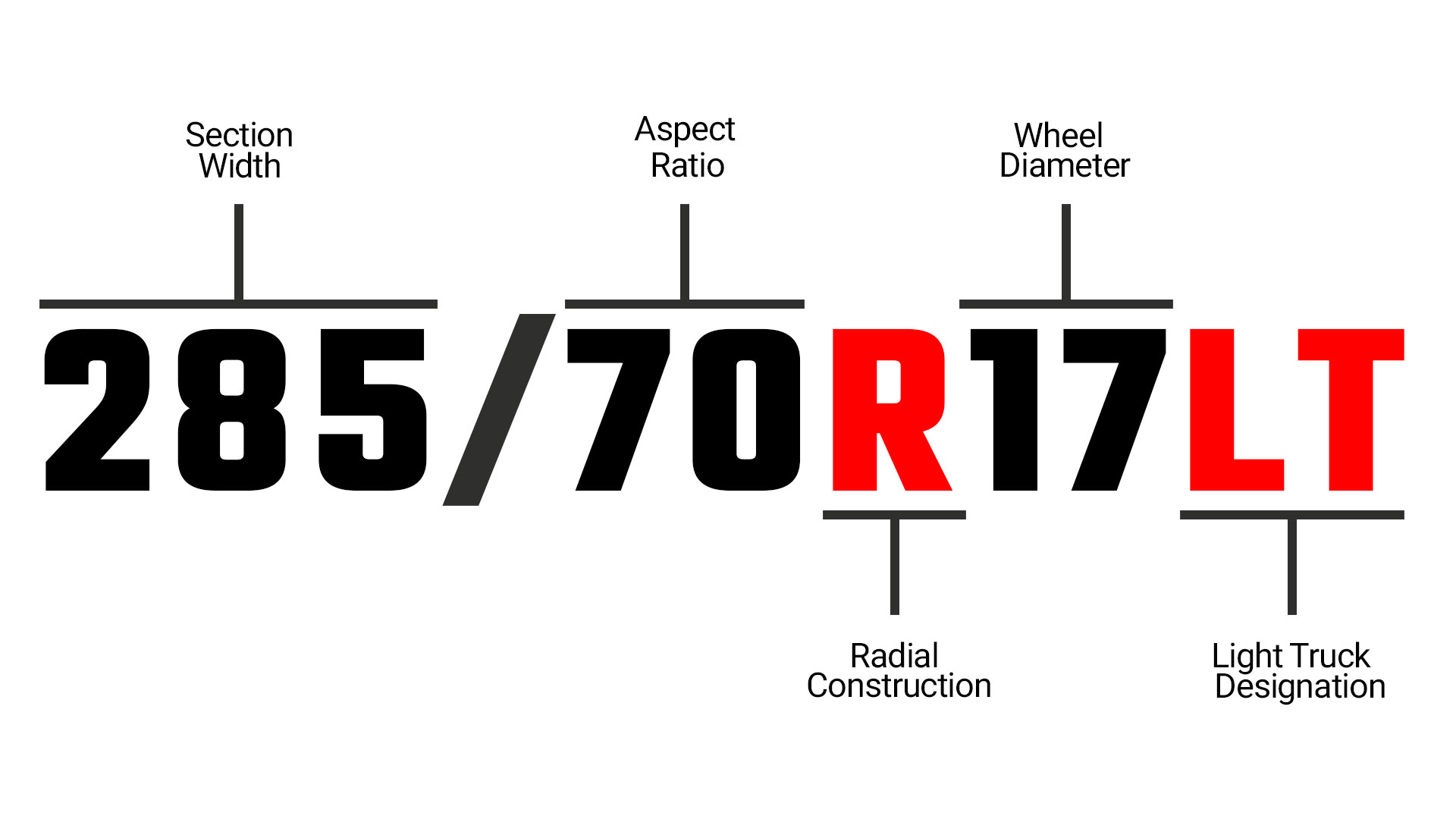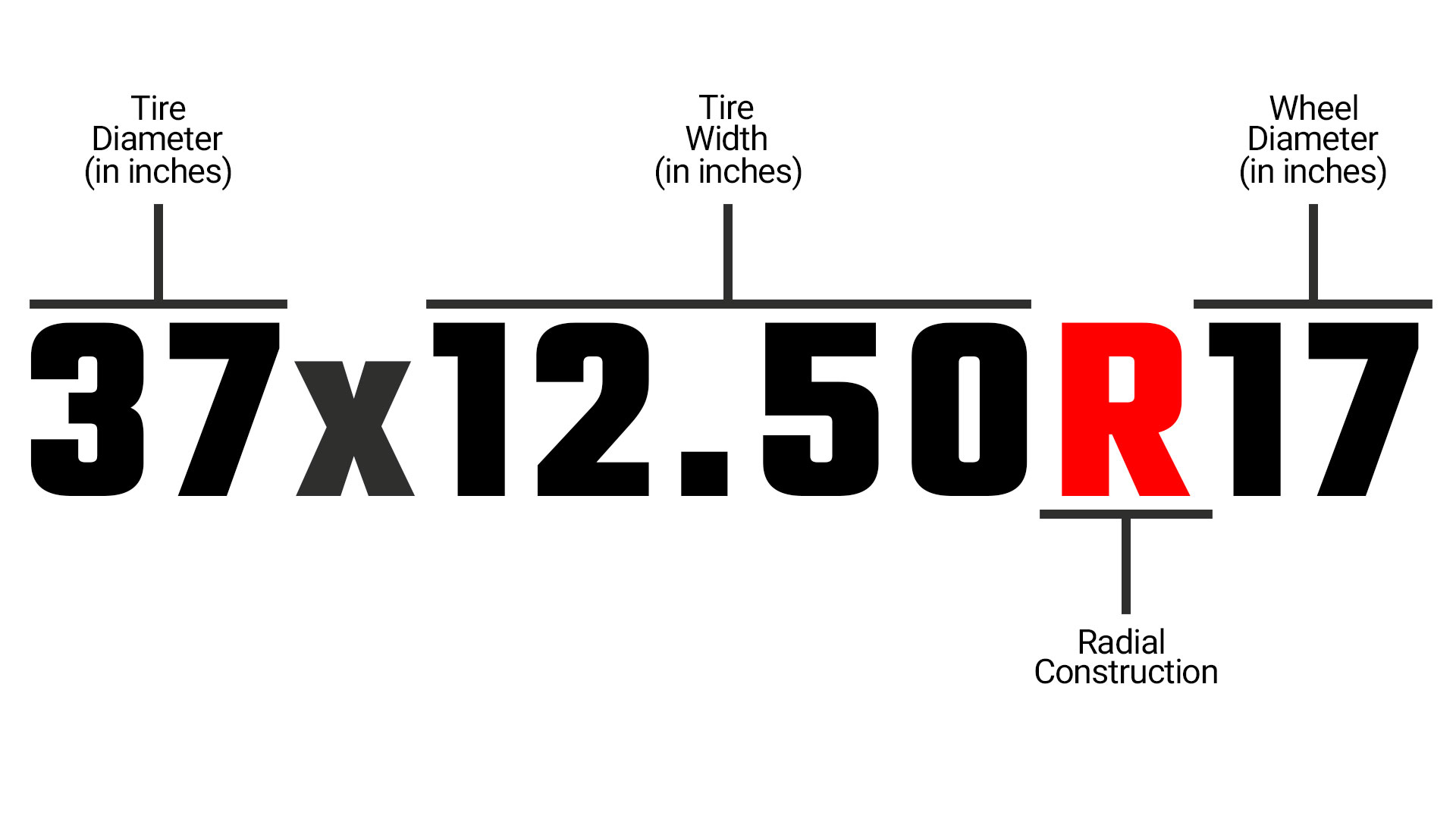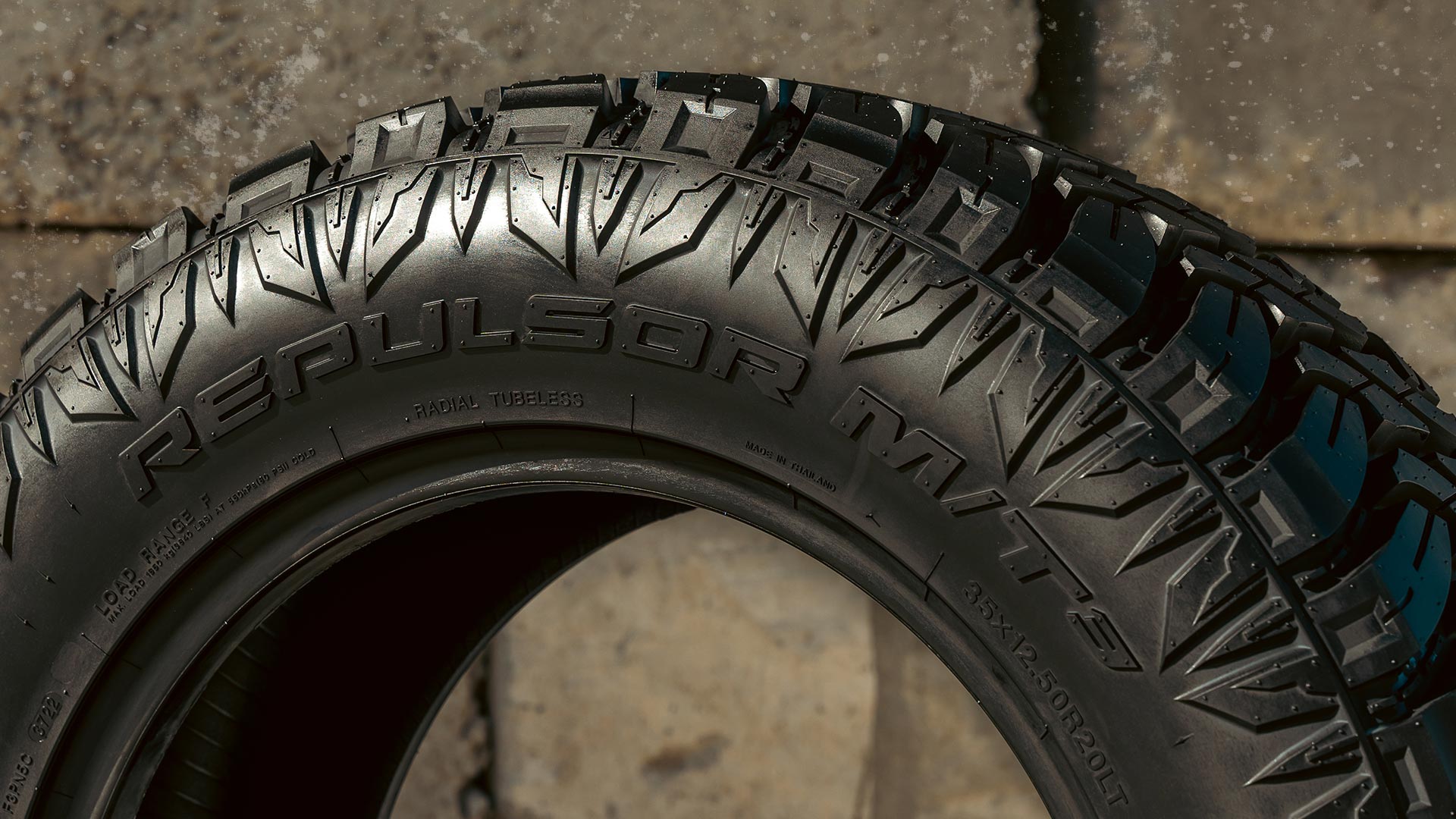Have you ever wondered how to read off-road tire sidewalls? You’ve probably noticed markings molded into a tire’s sidewall. Most of the information on the sidewall is common to all tires, and it might not be immediately clear how you’d be able to differentiate one type of tire from the next. Having said that, if you know what to look for, off-road tires have some unique tire markings that identify them as a mud-terrain tire, all-terrain tire, or a rugged-terrain tire.

Off-road tires are commonly expressed in the normal format: 265/70R17.
In the example above, 265 represents section width in millimeters. The second set of numbers, 70, represent the aspect ratio. Aspect ratio is identified as a percentage of the section height divided by the section width. Simply put, the aspect ratio number determines the height or tallness of the sidewall. The last two digit number, 17, is the diameter of the wheel or rim in inches.
Unlike standard road tires, off-road tires use the LT designation, which stands for Light Truck. The LT designation can be seen either before the section width or after the wheel diameter.
The LT designation is an indication that the tire was manufactured for a heavier load capacity than normal. Light truck tires offer a stronger and more durable build which makes it ideal for off-road driving conditions.

Flotation tire sizes are unique to off-road tires and typically range from 31 inches to 44 inches. Rather than utilizing measurements in millimeters, flotation tires are measured in inches. That said, metric equivalents may be available. For example, a tire size of LT325/65/R18 is equivalent to 35×13.00R18.
For this example we’ll use a tire size of 37×12.50R17.
The first two digit number, 37, represents the diameter of the tire in inches. The second set of numbers, 12.50, represent the width of the tire in inches. Followed by the letter R, which stands for Radial Construction, is the final set of numbers, 17, which represents the diameter of the wheel or rim in inches.
Off-road tires using flotation sizing are specifically built for off-road use. Using a unique tread design and construction, these types of tires are able to perform in extreme conditions.
To learn more about off-road tires in detail, visit our How To Choose Off-Road Tires and Off-Road Tire Size guide.

Another marking you’ll find on an off-road tire is the load range or ply rating. Modern tires utilize load ranges, while older tires use ply ratings. Load ranges are identified with letters and ply ratings are identified with numbers. While there are exceptions, most off-road tires fall in the D-F load range.
Load range or ply rating indicators are typically found in proximity to the tire size information.
Below is a chart that shows load ranges that correspond with older ply ratings.
| Load Range | Ply Rating | Max. Load Pressure |
|---|---|---|
| B | 4 | 35 PSI | C | 6 | 50 PSI | D | 8 | 65 PSI | E | 10 | 80 PSI | F | 12 | 95 PSI |
While the M+S rating is not exclusive to off-road tires, most if not all off-road tires are M+S rated. This means their performance in mud and snow conditions exceed the minimum traction criteria set by the Rubber Manufacturers Association (RMA).
Although the sidewall tread blocks don’t provide any information, they are a good indicator of whether or not that specific tire was designed for off-road use. The purpose of these extended tread patterns are to provide additional traction when driving in an off-road situation.
